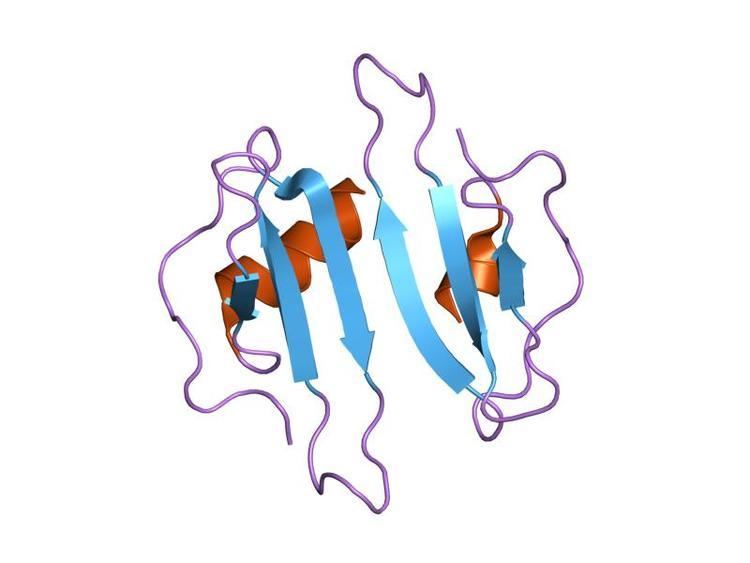Entrez 3627 | Ensembl ENSG00000169245 | |
 | ||
Aliases CXCL10, C7, IFI10, INP10, IP-10, SCYB10, crg-2, gIP-10, mob-1, C-X-C motif chemokine ligand 10, C-X-C motif chemokine 10 External IDs OMIM: 147310 MGI: 1352450 HomoloGene: 1203 GeneCards: CXCL10 | ||
C-X-C motif chemokine 10 (CXCL10) also known as Interferon gamma-induced protein 10 (IP-10) or small-inducible cytokine B10 is an 8.7 kDa protein that in humans is encoded by the CXCL10 gene. C-X-C motif chemokine 10 is a small cytokine belonging to the CXC chemokine family.
Contents
Gene
The gene for CXCL10 is located on human chromosome 4 in a cluster among several other CXC chemokines.
Function
CXCL10 is secreted by several cell types in response to IFN-γ. These cell types include monocytes, endothelial cells and fibroblasts. CXCL10 has been attributed to several roles, such as chemoattraction for monocytes/macrophages, T cells, NK cells, and dendritic cells, promotion of T cell adhesion to endothelial cells, antitumor activity, and inhibition of bone marrow colony formation and angiogenesis.
This chemokine elicits its effects by binding to the cell surface chemokine receptor CXCR3.
Structure
The three-dimensional crystal structure of this chemokine has been determined under 3 different conditions to a resolution of up to 1.92 Å. The Protein Data Bank accession codes for the structures of CXCL10 are 1lv9, 1o7y, and 1o80.
Biomarkers
CXCL9, -10, -11 have proven to be valid biomarkers for the development of heart failure and left ventricular dysfunction, suggesting an underlining pathophysiological relation between levels of these chemokines and the development of adverse cardiac remodeling.
Clinical significance
Baseline pre-treatment plasma levels of CXCL10 are elevated in patients chronically infected with hepatitis C virus (HCV) of genotypes 1 or 4 who do not achieve a sustained viral response (SVR) after completion of antiviral therapy. CXCL10 in plasma is mirrored by intrahepatic CXCL10 mRNA, and both strikingly predict the first days of elimination of HCV RNA (“first phase decline”) during interferon/ribavirin therapy for all HCV genotypes. This also applies for patients co-infected with HIV, where pre-treatment IP-10 levels below 150 pg/mL are predictive of a favorable response, and may thus be useful in encouraging these otherwise difficult-to-treat patients to initiate therapy.
